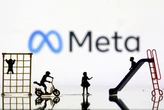Most of us are failingat AI.
While nearly 90% of CEOs expect AI to transform their organizations, only 16-23% report seeing meaningful value today.
As a result, employers and employees are losing out. Employees are significantly undertrained in AI. Yet, they feel the pressure to keep up. Only about one-third of workers report receiving employer-provided AI training, and of those who aren’t receiving training, 34% of them want their employers to provide it.
Meanwhile, employers face unprecedented pressure to innovate faster—all while navigating rapid changes in technology and the economy. Boards and investors are urging fast adoption of AI, but many companies don’t know how, given high expectations, questionable results, and a wildly uncertain future.
The companies that will succeed are the ones that can integrate AI into their workflow. The rest will be left behind.
By investing in training for their employees, employers can reap the benefits of AI almost immediately, while better preparing its teams, businesses, and communities for whatever the future holds. Here are three ways companies can harness the value of AI.
1. Use AI to unlock your talent pool
Because Amanda, a Duckbill employee, lives with chronic pain, traditional job roles were unsustainable, and freelance work didn’t offer reliable pathways to upskilling. Through structured training with Duckbill’s technology, Amanda was able to transition into a flexible, AI-integrated role.
The result: She’s trained to take on future roles in tech that are accessible and flexible enough for her. As are all our other employees.
2. Invest in human-AI partnerships
Elizabeth stepped back from her career to start a very difficult job: parenthood. She re-entered the workforce with a role at Duckbill, where she received tech training. As a Duckbill copilot, Elizabeth completes life administrative tasks for Duckbill members, using her knowledge to create real value for clients by combining AI-generated information and adding her lived experience and empathetic listening. For example, when a customer and fellow mother asked a parenting question, Elizabeth used AI to generate a research-backed foundation for an answer, then layered her own story, creating a richer, more meaningful connection while completing the member’s task.
The result: When leadership prioritizes human-AI workflows, it delivers both efficiency and emotional intelligence.
3. Embed AI training in career development
Amanda is teaching both humans and AI at Duckbill. As a team leader, she onboards new copilots, teaching them how to use Duckbill’s proprietary AI technology, and in the process working with engineers to help develop better tools that serve both copilots and members efficiently. Amanda’s progression is part of a larger, employer-built framework: Every role is paired with built-in AI fluency milestones, career development paths, and mentorship programs.
Embedding AI literacy into Duckbill’s career development, rather than treating it as a nice-to-have, turns training into infrastructure.
The result: Adaptability isn’t dependent on a few tech-savvy individuals; it’s systemic and sustainable, even in an uncertain economy.
It’s time to sink or swim
AI skilling for non-technical employees benefits employers and drives immediate-term efficiency, efficacy, and engagement. AI skilling gives employees the best possible chance to keep up with the demands of an AI economy and helps to build tech that brings out the best in our human teams.
The choice is yours: Reap the benefits of AI or get left behind like the other 84%.
Meghan Joyce is cofounder and CEO of Duckbill.











No comments